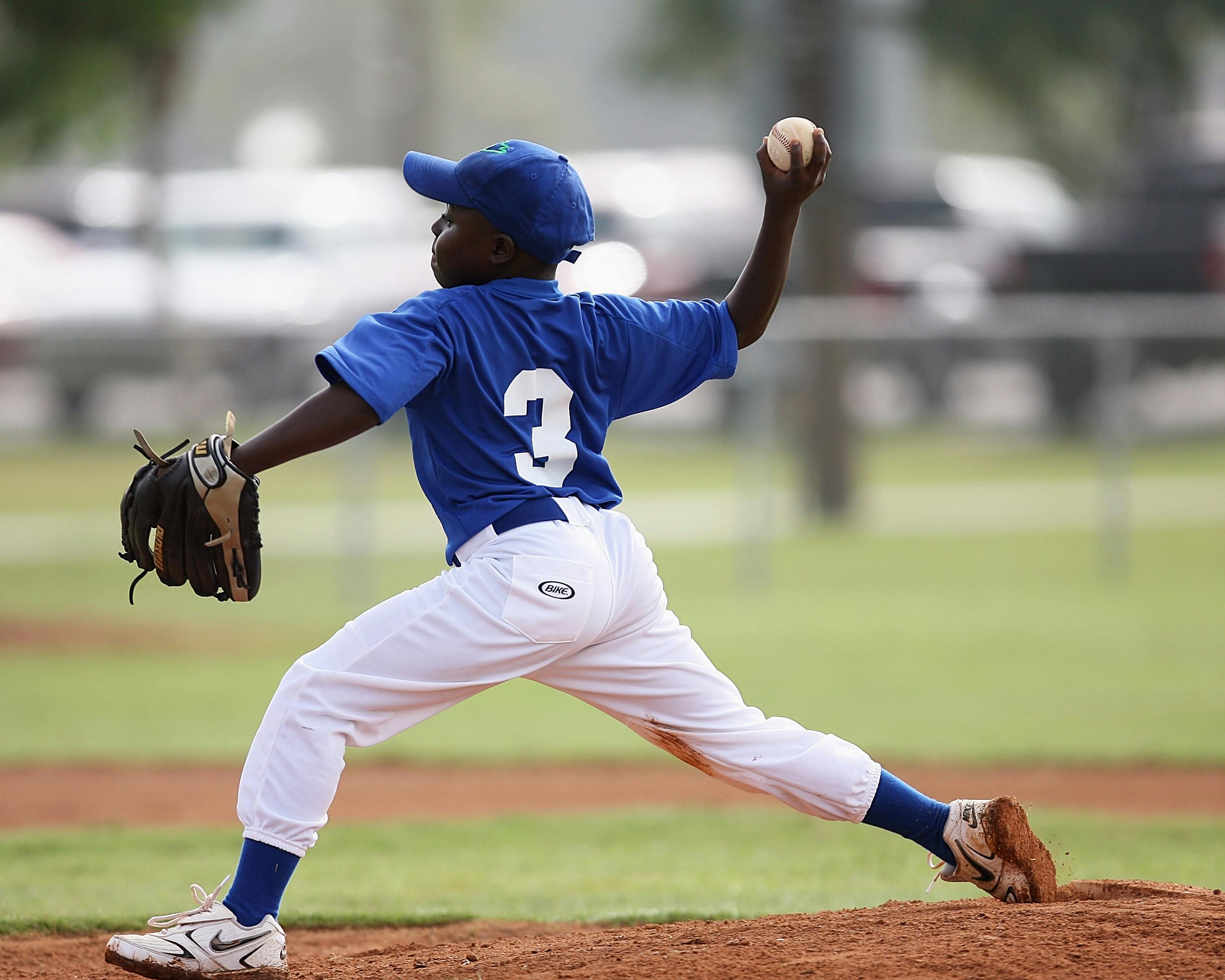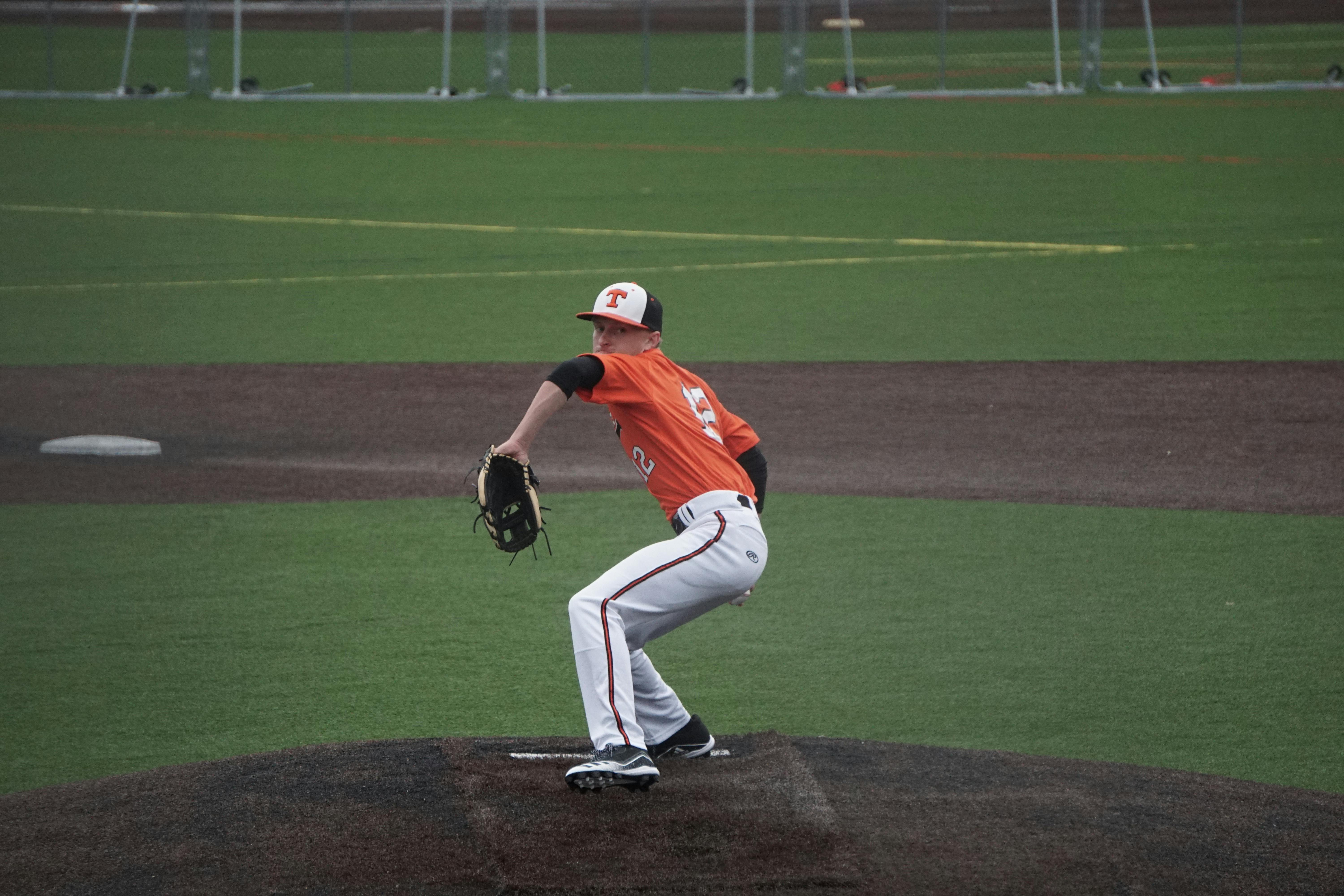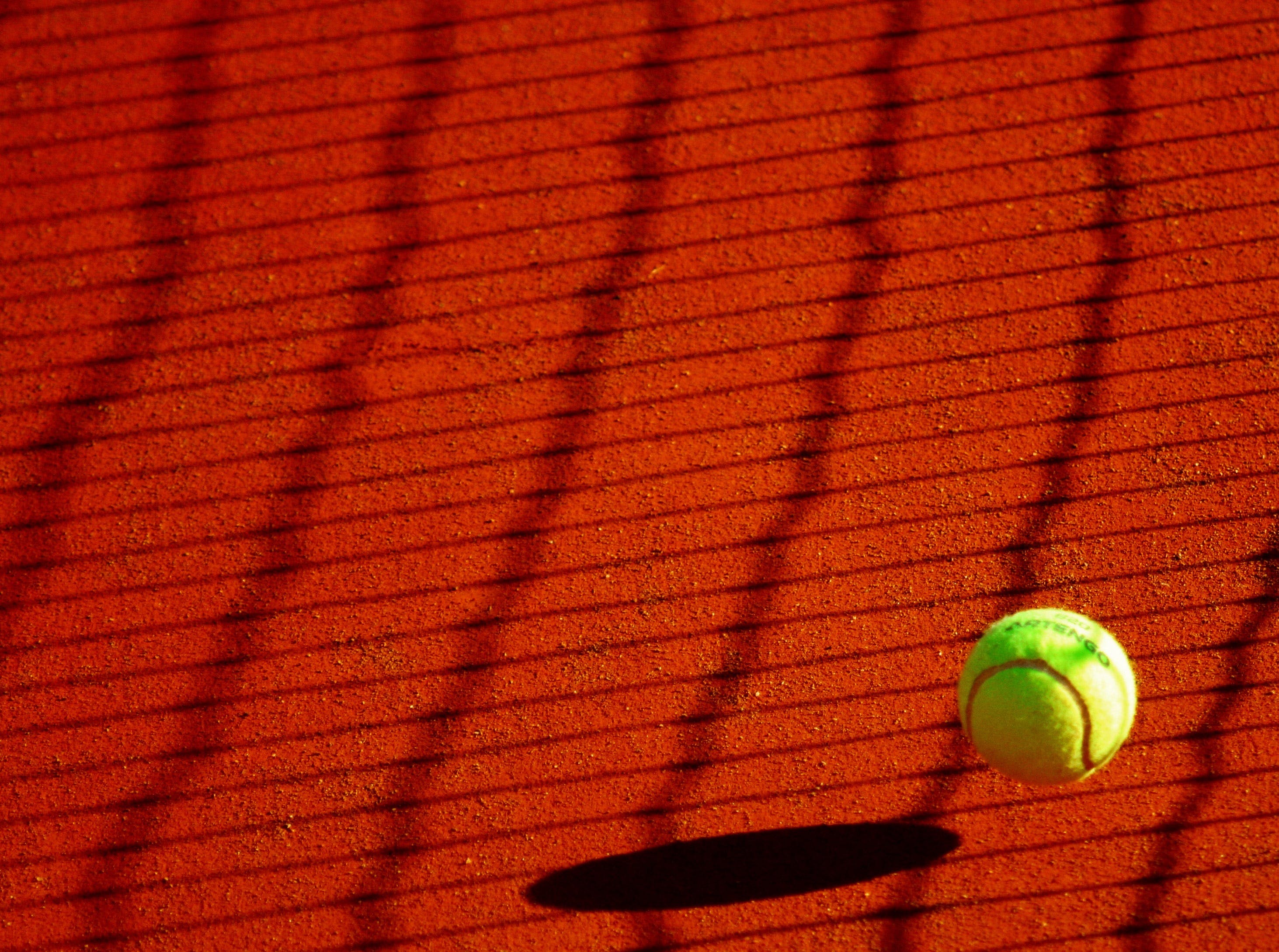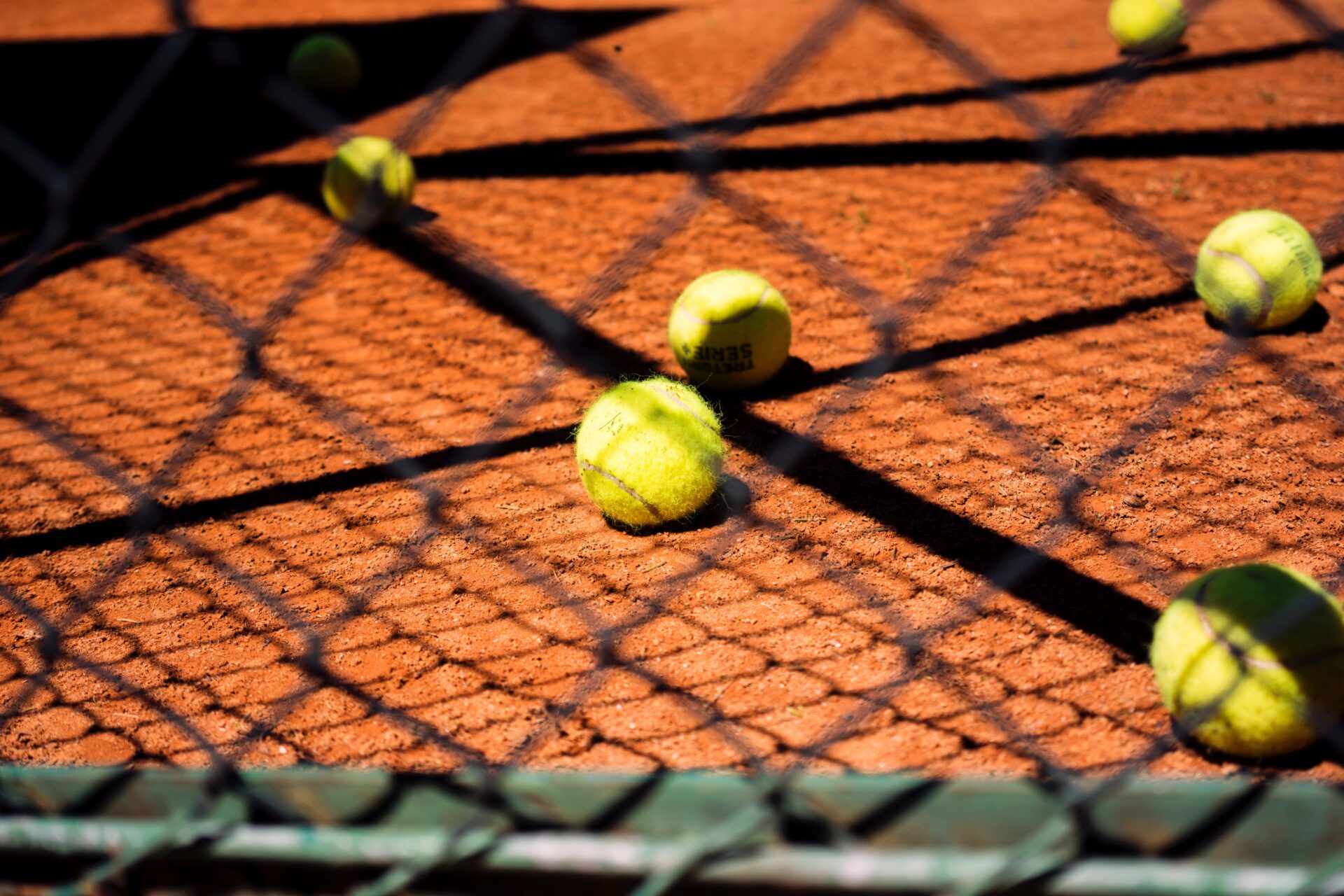Throwing a curveball is a key component of any successful baseball pitcher’s repertoire. It is one of the most difficult pitches to master, but when done correctly, it can be one of the most effective pitches in the game. A curveball is thrown with a spin that causes it to break or curve away from a right-handed batter. It can be used to confuse and confound hitters, and when thrown with precision, it can be virtually unhittable. Mastering the art of throwing a curveball requires time, dedication, and practice; however, with the right instruction and guidance, anyone can learn how to throw a successful curveball. In this article we will discuss the fundamentals of throwing a curveball, as well as tips on how to improve your technique.Throwing a curveball in baseball is an advanced pitching technique that can be difficult to master. It involves throwing the ball with a special grip and arm motion so that it spins and curves as it approaches the hitter. To throw a curveball, start by gripping the ball with your index and middle fingers on one of the seams. Then, cock your wrist as if you were starting to shake hands with someone, and position your thumb under the ball. As you throw, snap your wrist downward and point your index finger toward home plate to make the ball spin. The speed of your throw should remain constant, while you focus on snapping your wrist at the correct angle when you release the ball. With practice, you can gain control over where and how much the ball curves as it approaches home plate.
Types of Curve Balls
A curve ball is a type of pitch in baseball that is thrown with spin, causing the pitch to break down and away from the batter. It is one of the most difficult pitches to hit, and it can be used to great effect by pitchers who are able to master it. There are several different types of curve balls, each with its own characteristics and effects.
The knuckle-curve is a type of curve ball that is thrown with the fingers gripping the ball tightly, giving it more spin and causing it to break sharply downward. This type of pitch is often used as an out-pitch by pitchers who need to get an out in a key situation.
The 12-6 curveball gets its name from the path it takes when viewed from behind home plate. It looks like a clock face, with 12 o’clock being the highest point and 6 o’clock being the lowest point. This type of curveball breaks sharply downward and is usually thrown for strikes.
The slider is another type of curveball that has less movement than other types of curves but still has enough spin on it that it breaks down and away from batters. It can be used as an out-pitch or as a strikeout pitch if thrown correctly.
The reverse curveball is a variation on the 12-6 curveball that breaks in the opposite direction – up instead of down – making it even more difficult for batters to hit. It requires perfect timing and precision control from the pitcher, making it one of the most difficult pitches to master in baseball.
Finally, there are screwballs, which break inwards towards right-handed hitters or away from left-handed hitters due to their unique spin direction. These pitches can be especially effective when thrown at inside corners or outside corners depending on which way they break.
Overall, each type of curve ball offers its own unique advantages for pitchers who have mastered its techniques. Knowing how each type behaves differently can help pitchers get batters out in critical situations or just surprise them with something they don’t expect.
The Benefits of Throwing a Curve Ball
Throwing a curve ball is one of the most difficult techniques in baseball, and yet, it can be one of the most effective pitches. A well-executed curveball can be virtually unhittable for a batter, and as such, it is an invaluable skill for any pitcher to master. In addition to making it harder for batters to hit the ball, throwing a curveball also has several other benefits which make this technique an essential part of any pitcher’s repertoire.
One major benefit of throwing a curveball is that it can help increase the velocity on your fastball. This is because when you throw a curveball, your arm motion is more compact and powerful than when throwing a fastball. This helps you generate more power with your fastball and thus increase its velocity. Additionally, when pitching a curveball, you use less energy overall since you do not have to put as much effort into turning your arm over as you do with other pitches.
Another benefit of throwing a curveball is that it can help you deceive batters by changing up the speed and movement of the pitch. When batters are expecting a fastball or another pitch, they can be caught off guard by suddenly seeing or feeling a different type of movement from your pitch. This deception helps keep them guessing and makes it harder for them to accurately hit the ball. Additionally, this change in speed also helps increase the effectiveness of other pitches in your arsenal since they appear faster than they actually are due to the slower speed of the preceding pitch.
Finally, throwing a curveball can help reduce fatigue while pitching since it requires less effort than other pitches like fastballs or sliders. This allows pitchers to maintain their performance over longer periods of time since they will not become as tired out as quickly as if they were constantly throwing fastballs or other more difficult pitches. This makes it easier to maintain control over all types of pitches throughout the game and ensures that pitchers will still have enough energy left in them at the end of each game.
In summary, throwing a curveball has several benefits which make this technique an essential part of any pitcher’s arsenal. It can help increase velocity on fastballs as well as deceive batters by changing up speed and movement on each pitch thrown. Finally, it helps reduce fatigue while pitching so that pitchers can maintain their performance over longer periods of time without tiring out quickly.
How to Grip for Throwing a Curve Ball
Learning how to grip a curve ball is one of the most important things to master when throwing a curve ball. A proper grip will help you generate the right amount of spin on the ball and ensure accuracy and control. To achieve this, you need to understand the basics of gripping a baseball and how to adjust your grip depending on what type of curve ball you are trying to throw.
When throwing a curve ball, your middle and index fingers should be spread apart slightly while your thumb should be tucked underneath the baseball. Your thumb should be placed on the side of the ball opposite your index finger, so that it creates an inverted “L” shape when viewed from the side. This grip will provide you with maximum control over the spin of the ball.
Once you have mastered this basic grip, you can then begin to adjust it slightly depending on what type of curveball you are trying to throw. For example, if you are attempting a knuckleball, then your grip should be slightly looser than normal, with your index and middle fingers slightly spread apart. For a 12-6 curveball, your grip will be tighter than normal, with your index and middle fingers tightly together so that they form an arch.
It is also important to remember that when gripping a curveball, it is best not to squeeze too tightly as this can cause unnecessary strain on your wrist and forearm muscles which may lead to injury over time. Instead, focus on maintaining a firm but relaxed grip which allows for maximum control over the spin of the ball. With practice and patience, you will soon become comfortable with different grips for different types of curves and be able to throw them with accuracy and control.
Step 1: Gripping the Ball
The first step to throwing a curveball is to grip the ball properly. It is important to hold the ball with your fingers, not your palm, and make sure they are spread apart. Place your middle finger along the top seam of the ball. Place your index finger on the lower seam of the ball and point it downward. Your thumb should be placed on the back of the ball, directly opposite from your middle finger. Make sure that you have a firm grip on the ball as you throw it so that it doesn’t slip out of your hand.
Step 2: Wind-Up and Release
Once you have a proper grip on the ball, begin your wind-up by bringing your arm back in a circular motion behind you. When you come forward, snap your wrist as you release the ball. This snap is what gives a curveball its spin and makes it move in an unpredictable fashion. The key is to keep your arm straight as you release the ball so that it will go in a straight line without any wobbling or curving.
Step 3: Follow Through
After releasing the ball, follow through with your arm by continuing in a circular motion until it comes back to its original position behind you. This follow through helps ensure that all of your energy goes into throwing the pitch and not wasted on other motions.
Step 4: Practice
Finally, practice makes perfect when it comes to throwing a curveball. Practice throwing curves with both hands alternately for better accuracy and consistency. There are also drills that can help improve accuracy such as aiming for specific spots on an imaginary strike zone or using different speeds and spins for different batters. With enough practice, anyone can learn how to throw an effective curveball!

Arm Mechanics for Throwing a Curve Ball
Learning how to throw a curveball is an important skill for any baseball pitcher. It can be a challenging pitch to master, but with practice and the proper technique, it is possible to become very successful at throwing a curveball. The arm mechanics for throwing a curveball involve the use of an extended arm motion and a snapping of the wrist at the release point. This article will discuss the steps involved in perfecting this arm motion.
The first step in mastering arm mechanics for throwing a curveball is to understand the basic wrist and finger positions. The pitching hand should be held straight out in front of the body with the thumb facing up and the index and middle fingers spread apart. The ring and pinky fingers should remain tucked into the palm. This grip will help ensure that only two fingers are used during the release point of the pitch, which will help create more spin on the ball and increase its breakaway action.
The next step involves using an extended arm motion to create more velocity on the pitch. As you are preparing to throw your curveball, be sure to keep your elbow high and your shoulder pointed towards home plate. As you go into your windup, extend your arm all the way out so that it is at full extension before releasing the ball. This will create more power behind your pitch, allowing for greater breakaway action on your curveball.
Finally, you must learn how to properly snap your wrist at the release point in order for your pitch to have maximum breakaway action. As you are releasing the ball from your hand, it is important that you rotate your wrist so that it faces towards home plate at full extension just before releasing it from your hand. This snap of the wrist will cause greater spin on the ball and give it much more breakaway action when thrown correctly.
With practice and dedication, mastering these arm mechanics for throwing a curveball can become second nature over time. Once these basics are understood, pitchers can then focus on refining their technique even further by experimenting with different grips or speeds until they achieve their desired effect with their pitches. With enough repetition, any pitcher can become adept at throwing a successful curveball that can be used as an effective weapon against opposing batters!
Throwing a Curve Ball
Throwing a curve ball can be one of the most difficult and rewarding techniques a pitcher can learn. It requires great precision, control, and practice to perfect. A curve ball is a type of pitch in which the ball breaks down and away from the hitter due to spin on the ball. The goal of throwing a curve ball is to make it difficult for the hitter to make contact with the ball, resulting in either an out or a weakly hit ground ball. Here are some tips for mastering the art of throwing a curveball.
Grip
The most important part of throwing a successful curveball is getting the correct grip. Grip the baseball with your index and middle finger on top of the seams and your thumb located at the bottom of the baseball. This grip will give you complete control over where you want to throw it, how much break it will have, and how fast you want to throw it.
Arm Motion
The arm motion for throwing a curveball should be slightly different than when throwing other pitches. The key is making sure that your arm stays relaxed and loose throughout your entire motion. As you come through with your arm, snap your wrist forward as if you were trying to flip pancakes off your wrist onto a plate behind you.
Release Point
The release point for throwing a curveball is very important in order for it to have proper break and spin on it when it reaches home plate. You want to release the pitch slightly later than when throwing other pitches so that there’s more time for your fingers to impart spin on the baseball before it leaves your hand.
Follow Through
Follow through after releasing your pitch is key in order for it to have good spin and break on it when it reaches home plate. Make sure that after releasing the pitch, keep following through until both of your arms are parallel with one another.
Practice
As with any skill, practice makes perfect when learning how to throw a curve ball. Find an open area where there is plenty of room for you to throw without having to worry about hitting anyone or anything around you. Start off by simply playing catch with someone else while trying out different grips and arm motions until you find what works best for you.
By following these tips, you will be well on your way towards mastering this difficult yet rewarding technique! With enough practice, patience, and dedication, soon enough you’ll be confidently tossing curves like an ace!
Differentiating Pitch Types with Proper Finger Positioning
Finger positioning is a crucial part of baseball. Knowing the proper finger positioning for different types of pitches can make a big difference in the success of a pitcher. Differentiating between fastball, curveball, slider, and changeup requires a different approach in terms of finger placement.
For fastballs, the index and middle fingers should be placed on the seams of the ball, with the thumb slightly underneath. This grip provides enough friction to give the pitch more velocity and accuracy as it goes toward home plate. Curveballs require a different grip: the index and middle fingers should be placed directly on top of each other and spread apart from each other slightly. This grip gives the pitch more spin and makes it break downward to deceive batters.
Sliders are similar to curveballs but are thrown with more velocity than curves. The index and middle fingers should be placed side-by-side on one seam, creating a “clockwise” spin when thrown correctly. Finally, changeups require an entirely different grip than any other pitch: the index finger should be placed directly on top of the ball while the middle finger is placed underneath it. This grip helps to reduce velocity while maintaining accuracy, making it an effective way to fool batters into swinging at bad pitches.
Finger positioning is an essential part of pitching that can make or break a pitcher’s performance in any given game. Knowing how to differentiate between fastball, curveball, slider, and changeup can give pitchers an edge over their opponents by allowing them to vary their approach from batter to batter. With proper practice and dedication, pitchers can master these grips and become much more effective on the mound!

Conclusion
Mastering the art of throwing a curve ball in baseball requires a lot of practice and determination. Players must learn the technique, develop their own style and hone their skills. It is also important to have a good understanding of the game itself and be able to read the hitter’s tendencies. With these elements in place, any player can become a master of the curve ball.
By paying attention to the basics, such as grip, release point, arm angle and follow through, players can improve their ability to throw a curve ball with more accuracy. They should also study how professional pitchers approach the pitch so that they can better understand how it works and how they can apply it to their own game.
The curve ball is one of the most difficult pitches to learn and master in baseball. But by practicing diligently and studying its mechanics, players will be able to gain an edge over their opponents on the mound. With hard work and dedication, any player has the potential to become an expert at throwing this difficult pitch – mastering the art of throwing a curve ball in baseball.




